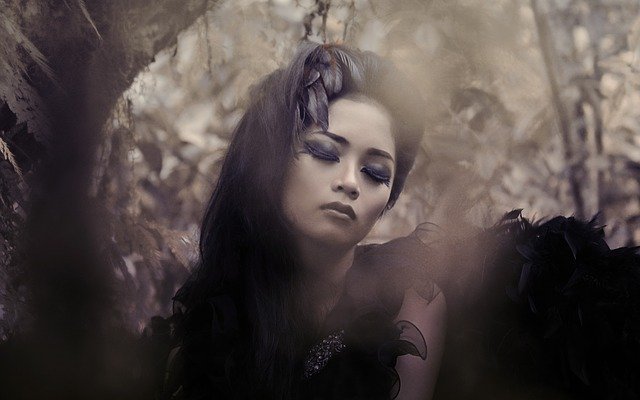Implement tips so that you can become a better photographer. You can learn all the things you must know to simply fix mistakes in photography that can give you bad shots, or make you miss a special shot.
Overcast skies aren’t great for pictures. An expanse of gray sky in your images will give them a dull, pallid appearance. If you have to shoot with an overcast sky, use black and white methods of photography. On a beautiful day, you can include as much blue sky as you desire.
You should use digital techniques in order to shoot pictures that look like graphic pencil sketches, oil paintings, watercolors, and more. There is a variety of digital software available on the market, but the standard is considered to be Adobe Photoshop. Instantly making your pictures into masterpieces is simple. Just hit the “filter” button, select the medium that you prefer, and then click the selection that you want.
If you wish to join the ranks of very accomplished photographers, move up to a dSLR camera. The relatively new camera utilizes a single lens, yet allows you to preview the images right away. Look for a DSLR that is full frame, as this provides the largest image sensor, and therefore yields the most detailed images.
Shutter Speeds
Many people believe that when there is a lot of sunshine, you should go outside to take pictures. Though the truth is that if you that photographs in direct sunlight, you will end up ruining your images. Direct sun will cast shadows and cause glares but it will cause highlights that are uneven and your subjects may squint. If you can, try to choose late evening or early morning light to shoot outdoors.
It takes experimentation to learn which shutter speed works best in different settings. Different shutter speeds allow you to get quick action shots, as well as blur several seconds worth of time together. Faster shutter speeds should be used to capture objects in motion, while slower shutter speeds are great for still shots.
When it comes to photography, framing is key. To remove things that aren’t relevant to your subject matter, zoom into its focal point. You will reduce clutter in your photos and prevent unwanted focal points.
If you want to become a serious photographer, you need a dSLR. This digital single lens reflex camera can help you see the subject when you take the photo. For the most detailed pictures and largest image sensors, you want to invest in a full-frame DSLR.
Play around with the settings on your camera and create different compositions for your photographs. There is no need for an original object if you are looking to create an original photo. As a photographer, you know you have talent when you can take pictures of familiar objects and make them look interesting and unusual. Finding your style can be done by trying different techniques.
When it comes to capturing great shots of people, you should aim to have a slightly blurred backdrop. If the background is just as in focus as the subject, it takes the eye away from where you the viewer should be looking. Blur your background to keep it from detracting from your central subject.
Before traveling with your photography equipment, take the time to carefully plan which equipment you need to take. Double check that you have packed any essential items such as lenses, batteries and cleaning tools. Never bring more equipment than you will need, and plan accordingly for convenience of transport.
Instead of waiting until your destination to start recording your trip with photographs, start snapping those photos as soon as your trip starts. You’ll discover lots of chances to take excellent pictures once you arrive; however, you should see the actual trip as a chance to take some unique shots. Document your travel. For example, there are many interesting things about an airport that makes it perfect for picture taking.
You’ll take the best photographs when you love what you’re doing. Photos should be a way for you to recall past events or times that you can remember and share with your friends and family. Have fun taking photographs, and you’ll want to enthusiastically learn new skills.
Photography should be something that you enjoy doing. Pictures provide memories of people, places or things that you hope to remember and share with others. If you truly love taking photographs, you’ll improve your knowledge and skills much quicker.
When photographing your subject, try to get as close as you can. Nothing is worse than viewing a photo of a subject that is too far away to see any clear details or colors. Move closer to give your shots vivid clarity.

When photographing your subject, try to get as close as you can. A subject too far in the distance loses too much detail for the shot to be very good. The result of a close shot will be a vivid picture that you will enjoy more.
You do not have to stand utterly still when photographing a particular subject. In fact, you can and should move around to find the angle that provides the best shot. Shoot from several different heights and vantage points to open up possibilities you may not have otherwise envisioned.
You will have a better picture if your subject is off-center a little. Pre-focus your camera, and move a little to one side. Centering is generally expected and not that interesting in a photo. Off-centering your photos makes them more interesting to those viewing them.
Hold your breath while taking pictures to get the perfect shot, all while remaining still. Even a hair’s-breadth movement can destroy that perfect shot. Take that second to freeze before touching your shutter button, hold your breath, and snap the perfect shot.
If you like the look of old photographs, pick up a vintage camera. These will give your pictures an old-fashioned look and a historical vibe. They can be found in pawn shops and second hand stores. You can use ISO 200 black-and-white film to get a great balance between versatility and dramatic results. After the film is developed, try getting prints on various paper types, like fiber papers.
There’s no hidden skill required to become a great photographer. Practice your shooting to gain experience, and hone your skills. Feel free to experiment; there is no need to develop or keep all of the photos you take, especially if you use a digital camera. Take photographs of anything and everything, and then review them later for ideas and insights on how you might have gotten a better image.
Make sure that you adjust your cameras white balance whenever you are taking pictures under florescent lights. Fluorescent light gives a cold rather than a warm effect. This means you will need to adjust your settings to increase red and decrease blue tones.
When preparing to shoot some kind of wedding, try getting unexpected shots of little details to warm yourself up, like a makeup bag or a flower close up. Candid shots can sometimes result in a very special photo.
If you plan on diving into landscape photography, you need to ensure that your pictures have three key factors. They are a background, mid ground and a foreground. This technique of composition is well-established in many forms of visual art, and photography is certainly among them.
Do your own photo editing. There are a ton of different editing software programs for photographs. Look for a program with an unlimited number of methods to edit your existing photos. Make sure you can use it easily as well!
When planning a shot, try to “frame” it. Not a physical frame around the shot, but a type of “natural” one. Use the natural elements in the area to create a framing effect around your subject. Practicing this technique will help you to better your composition skills.
It is possible to make any subject more interesting by shooting from another angle, adjusting the camera settings or utilizing alternative lighting. Tinker with these settings before you take pictures of things you are planning to shoot in order to get the best pictures possible.
You can see from the pointers in this article that enhancing your photography skills is not so difficult after all. It simply requires knowledge, practice, and continual attempts to refine your skills. When you start getting the results you want to see in your pictures, you’ll know that the work was worth it.
It is important that you understand when you should or should not use the flash function on your camera. Don’t just turn the flash onto automatic and not reassess it ever again. Too much or too little light has ruined many pictures. Learn when your flash is best used and also be conscious of the angle at which you use it.


